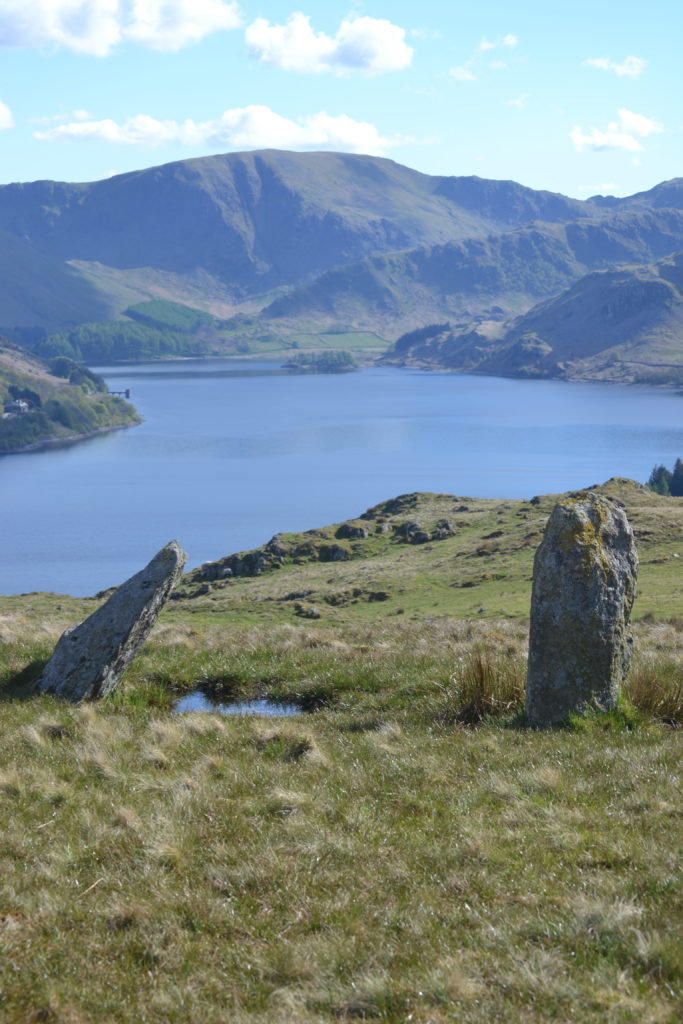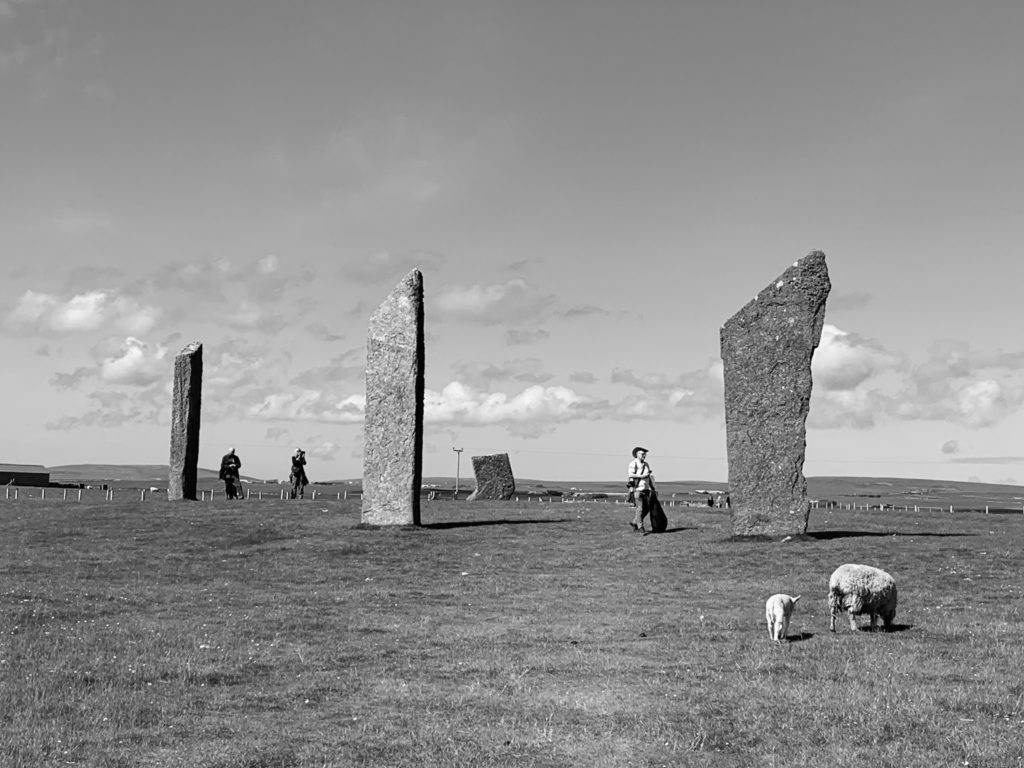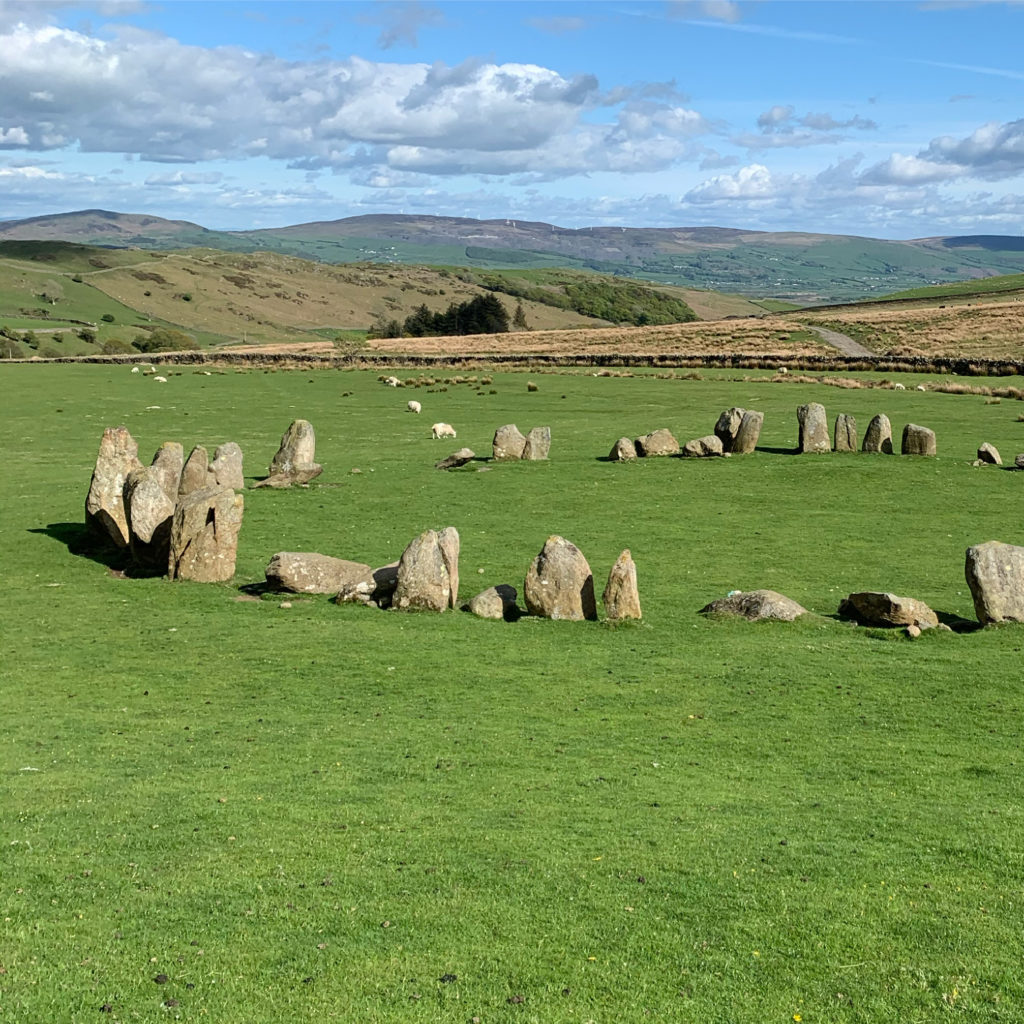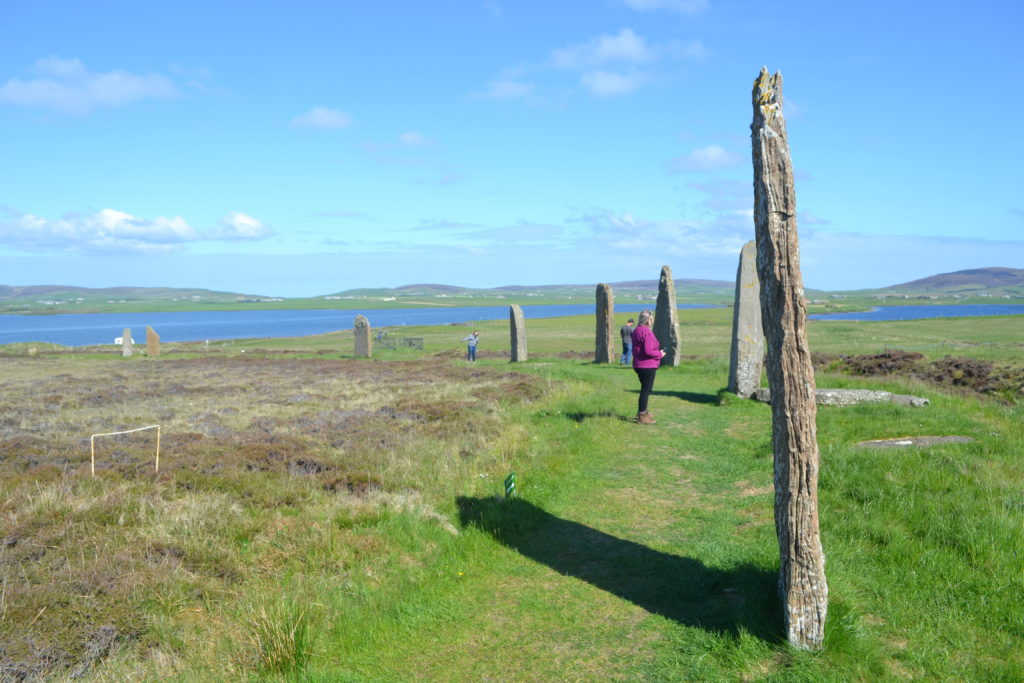“This is not how it’s meant to be!” I reflected, as I saw the storm marching up the valley towards me. In minutes I’d be watching helplessly as torrential rain dissolved my carefully prepared route maps.
In my head, my 250-mile electric cycle odyssey around the Neolithic and Bronze Age stone circles of Cumbria was always going to unfold beneath an azure sky, punctuated only by perfect dawns and sunsets.
“My inane optimism will kill me one day,” I said to myself as I somehow persuaded my phone to stand in for the fistful of papier maché that had been Day One’s route guide. My journey coincided with the easing of lockdown and the coldest, wettest May in recent memory.
The idea of visiting all these ancient relics had been an evolving one and my original plan had been to walk to them all. That was before I discovered just how many stone circles there are in Cumbria: anything up to around 50, though perhaps as many as a dozen have been “lost” over the last couple of centuries – to agricultural improvement, the Victorian zeal for progress, and sheer ignorance. Two of the finest such monuments only just escaped disappearing beneath the M6 when it was built.
Perhaps I should say at this point that I am not obsessive about stone circles, although my interest in this intriguing legacy of our early farmers has latterly tended to fill my mind to the point at which my eyes can discern stone circles where others see no more than a random collection of rocks.

And I absolutely cannot pretend not to be fascinated by them – and by the sense of calm that so many ordinary people say they feel when visiting such circles, be they large or small. It would be possible, of course, to stretch a point and suggest that the ancients built these circles in locations where they – blessed with closer bonds to the earth than most of us have today – felt a force of some kind beneath their feet.
I hesitate to do that because it would be quite impossible to frame a compelling argument within the constraints or modern scientific understanding, even if Australian Aboriginals, so closely bound to their environment, might well tell you otherwise.
I’m no archaeologist and so I can only draw from the evidence gathered by those who are, and then permit myself to hazard some guesses as to what that evidence tells us about the kind of lives lived here 4-5,000 years ago.
What prompted me to make my journey and write about it was the reality that we actually KNOW almost nothing about the people who lived here around the time the Egyptians were building pyramids and, like the ancient Mycenaeans, writing about it on papyrus. I wanted some clues as to whether these people would in due course evolve into the Brittonic tribes who were around when the Romans arrived and started to write things down. Did they have a rich oral history, telling tales around the fire in a tongue that would evolve into the proto-Pictish and proto-Welsh of pre-Roman times?

Why did they decorate so many rocks with the cup and ring markings that can be found today the length and breadth of these isles? And why did they apparently NOT draw pictures on rocks of animals, like people had done as early as 40,000 years ago? Could they make bread? Did they make jam? Do we have their DNA?
Putting down routes
As I pondered such questions and began my research there was at least one linkage that did begin to emerge. Archaeologists uncovered numerous so-called ‘Bell Beakers’ that had been buried in a tomb, near Alston, in the North Pennines, at around the time there was a proliferation in the building of burial cairns. Previously there had been speculation that these “beaker people” had arrived from Europe and wiped out the indigenous population. Professor Andrew Fitzpatrick, of Leicester University, is among those who thinks otherwise, suggesting, rather, that the movement of beakers over such large distances simply reflects trading practices at the time. Those who brought them buried them with their own people but lived alongside the natives they encountered.
And once you accept that there was a class of itinerant traders, journeying not just overland, but across the sea, then you can start to think about the other goods that may have been traded, as well as about the routes these people may have taken. That’s when you begin to get answers as to why Cumbria has so many stone circles, ranging from the near pocket-size like Blakeley Rise, near Ennerdale Bridge, to enormous monuments, like Long Meg and Her Daughters, or Mayburgh Henge, both near Penrith.
Cumbria back then boasted an industry that drove trade in its goods across not just northern England and southern Scotland, but far to the south and beyond – to Europe. The archaeology suggests a premium on Cumbrian products: at the heart of the Lakeland Fells, on near inaccessible peaks around Scafell Pike and Langdale, Neolithic craftsmen hewed the finest possible axe heads from the hard volcanic rock. Cumbrian axes became prized, not just as practical tools, but for their ceremonial value.
Some of the unfinished stones would be taken to the coast at Maryport or Seascale for finishing and then taken by sea for trading, turning up as far north as Orkney. Others would be carried across the Pennines, to be found in Yorkshire, Lincolnshire or Norfolk.

Stone infrastructures
The transpennine routes taken by these ancient traders evolved into the corpse roads, over which coffins were carried for burial from about the fifth century; the routes taken by packhorse caravans in the 17th and 18th centuries, carrying goods such as cotton or rum over the fells from the west coast ports; the 18th century coach roads; even the much earlier Roman roads that underpin our modern highways.
Karen Griffiths is an archaeologist with the Yorkshire Dales National Park who has done a lot of work on one particular route from the Lakes towards the Pennines, via the little town of Shap, which sits on the granite and limestone fells that connect the Lakeland mountains with the Pennines. Today the M6 passes it by and no West Coast trains stop here any more but in ancient times it was a hugely important crossroads and boasted a ceremonial avenue second in size only to the one at Avebury, in Wiltshire.
“Early antiquarians witnessed the wholesale destruction of the avenue,” writes Griffiths. “Stones were blown up to be used in house foundations in Shap or cut into gate stoups. Enclosure of the land in the early nineteenth century saw more stones moved and incorporated into field walls.”
Kemp Howe, a monumental stone circle at the southern end of this avenue, was two thirds buried beneath the West Coast Main Line by the Victorians. The M6 narrowly misses a fine double circle, at Gunnerkeld, just north of Shap, and the fell’s extensive quarry workings have surely consumed some of the ancient monuments that extend over a vast area, although I was still able to locate several.
Griffiths believes the avenue (which was sketched as recently as 1775 in all its magnificence by Lady Lowther) was a reflection of the status of those in Shap who controlled the various trading routes to the south and east.
“Power and privilege was reinforced for those who participated in whatever rituals took place along the avenue,” she writes.
One such avenue went across the limestone fells towards the village of Orton and on towards the town of Kirkby Stephen, before heading up the Eden Valley to the low watershed at the head of the River Ure, and on down Wensleydale to the three monumental henges at Thornborough, near Ripon, in North Yorkshire. Recent investigations at the Gamelands stone circle, near Orton, have cast more light on these shadowy times.
Circling back
The more I myself began to find out about all this, the deeper my interest became. I remembered my parents speaking of the curious atmosphere they encountered on a chance visit to a lonely moorland called Blawearie, in Northumberland. I discovered it was the site of a 3,000-year-old burial cairn. The owner of Gunnerkeld circle said she had felt that sense of calm there, even while yards from the busy M6. I found young families at Long Meg, simply seeking out a sense of peace in the troubled times of covid.

A precise avenue of sheep at Sunkenkirk circle, near Broughton-in-Furness
Not by accident, I reflected, had I chosen the circles at Long Meg, Castlerigg (Keswick), and Sunkenkirk (Broughton-in-Furness) as locations in which the characters in my adventure novel, The Episode, found themselves shifting between time zones. I’m far from alone: authors Elly Griffiths and Joss Stirling have found stone circles make irresistible locations for thrillers, as has the Cumbrian author Mike Craven, whose victims die grizzly deaths at some of the less well known circles I visited, in his crime novel, The Puppet Show.
I headed north to Orkney to the stone circles there that also featured in my novel, this time to meet Mark Edmonds, Emeritus Professor of Archaeology at the University of York. He has been based up there for the past 15 years, reflecting the islands’ now acknowledged importance in our early history, the settlements and stoneworks predating Stonehenge. He’s also the foremost expert on Cumbrian stone axes, and so I met him by the Ness of Brodgar, which is Mecca these days for Neolithic investigators.

“There could be half a dozen Cumbrian axes found here, flaked from working a big quarried block,” he tells me. “Some of the other axes are finished but they are really quite small”
We talk of celestial alignments found in some stone circles, often marking the solstices, or the equinoxes. And then Mark surprises me by saying that he doesn’t believe these monumental edifices were actually built to last. Rather they would have served a particular ceremonial purpose at a particular moment in time. Had they been built to last, he says, they’d have been given deeper foundations.
And some of the smaller ones may have been no more than local meeting places, he continues. I reflect that the real mystery is perhaps that so many have defied their builders to tantalise and intrigue us thousands of years later.
Stan L Abbott’s Ring of Stone Circles: Lore and Legends of Neolithic Cumbria will be published by Saraband next March.
His Walking the Line: Exploring Settle & Carlisle Country is recently published by Saraband and his novel, The Episode, tells the story of a psychotic episode and is published by Sixth Element.

